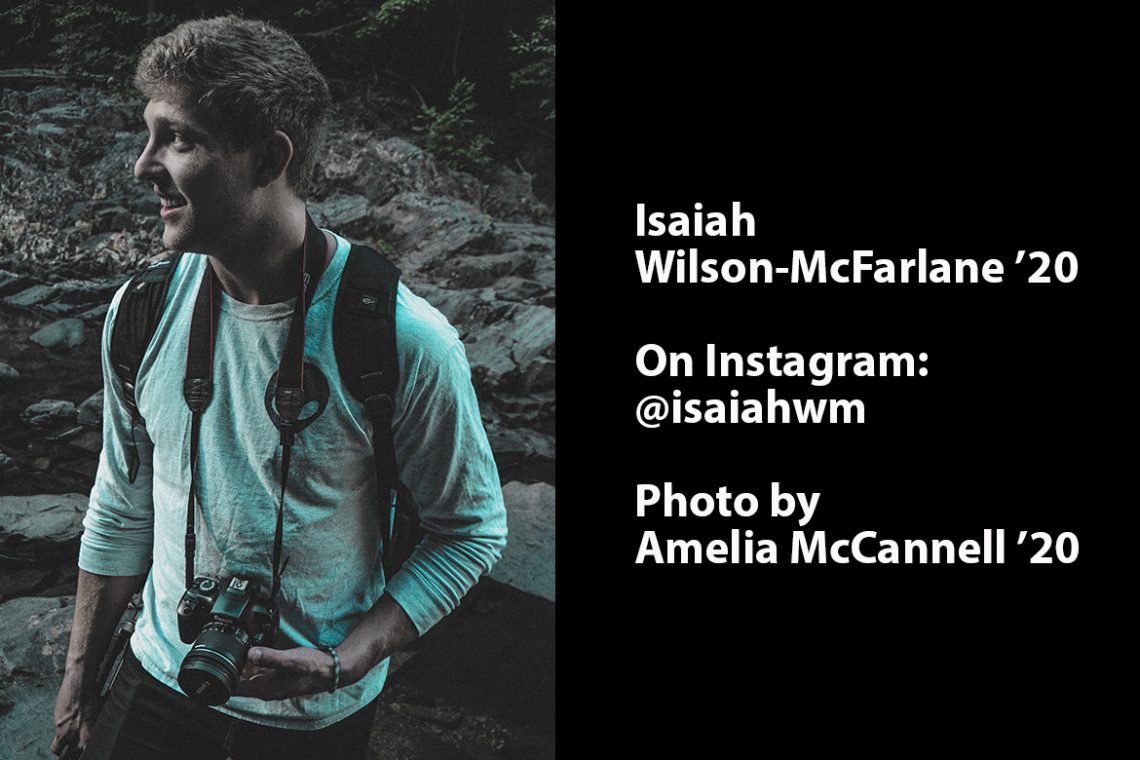UMF student Isaiah Wilson-McFarlane ’20 sees the moon anew.
This month, photographer and science writer Isaiah Wilson-McFarlane ’20 turns his attention away from terrestrial beauty and chooses instead to moon about with his new 8-inch Dobsonian Telescope. Mounted to a DSLR camera, the scope’s 50 pounds of glass convert to a 1,300mm lens, capable — in his control — of capturing sublime lunar views. Here’s his showcase of moon shots and the science behind the heavenly scenes.
— Marc Glass, director of advancement
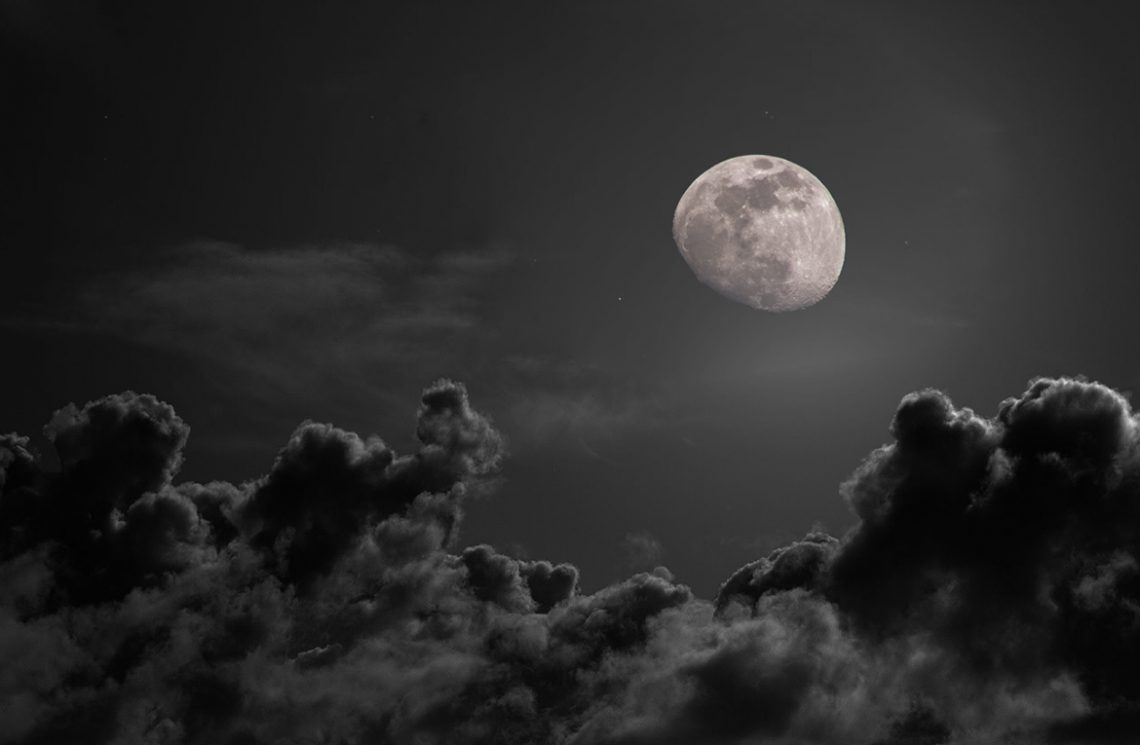
Moon and cloudscape, March 19, 2019.
I don’t blame you if you haven’t given the moon much thought as it circles the Earth day in and day out. We tend to accept things as trivial when they are a constant in our lives. But the moon is a fascinating artifact of a period of time in our solar system’s history that was violent, destructive, and formative for the existence of life on Earth.
Shortly after Earth accreted, a period called the Late Heavy Bombardment, starting 4.5 billion years ago, took place. During this time, millions of asteroids rained onto Earth’s surface, depositing water and helping Earth’s mass grow. The solar system was still very new, and there were many minor planets orbiting the newly born sun, smashing into each other, coalescing, and throwing debris into orbit around the sun.
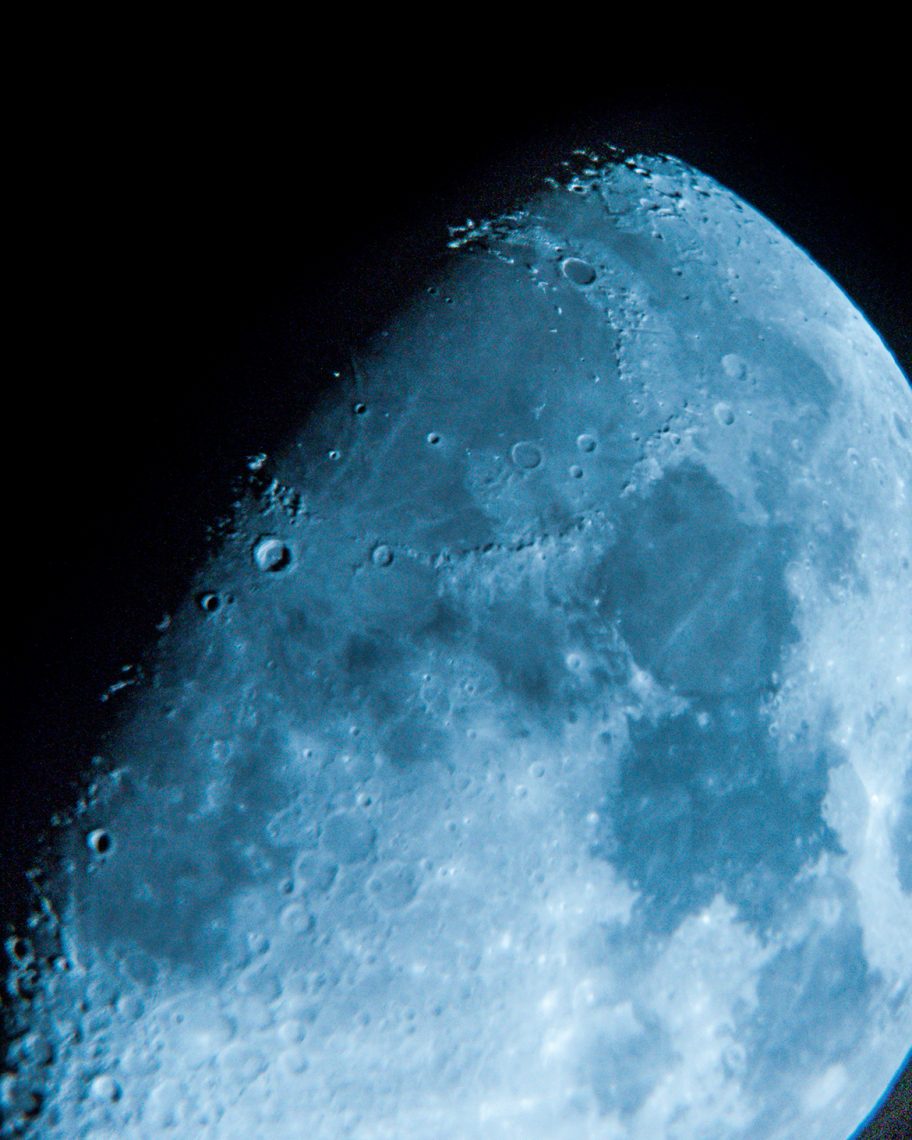
On the Ides of March, Isaiah gets up close and personal via his Apertura 8-inch Dobsonian Telescope. March 15, 2019.
One of these minor planets called Theia crossed paths with Earth. Upon impact, the energy released was millions of times more than the largest atomic bomb ever detonated. A mixture of vaporized Earth and Theia was ejected into orbit around Earth and the sun. As time went on, the ejecta that was still orbiting Earth came together under gravitational forces to form the moon 4.47 billion years ago. There was another smaller moon roughly 750 miles wide created by the Theia-Earth impact. After orbiting Earth for a while, it pancaked itself against the backside of the moon. Imagine seeing two moons in the sky on a clear night!
Since the moon was formed, it has been bombarded by asteroids and comets. In fact, an average of 2,800 kg (6,170 lbs.) of material hits the moon every day. There is no atmosphere to disturb the dust on the surface and hide the craters, which is why you can still see impacts that are billions of years old. After I learned about the moon’s tumultuous past, I found myself looking up at the moon whenever I walked anywhere at night. I was extremely interested in astrophotography and quickly found out that the polar aligned motor-driven star tracking tripods and astrophotography telescopes required to do long exposures of nebulae and planets were thousands of dollars too much for my broke-college-student bank account. This meant that I would have to live vicariously through YouTube accounts featuring how-to astrophotography videos with the gear I could dream of possessing.
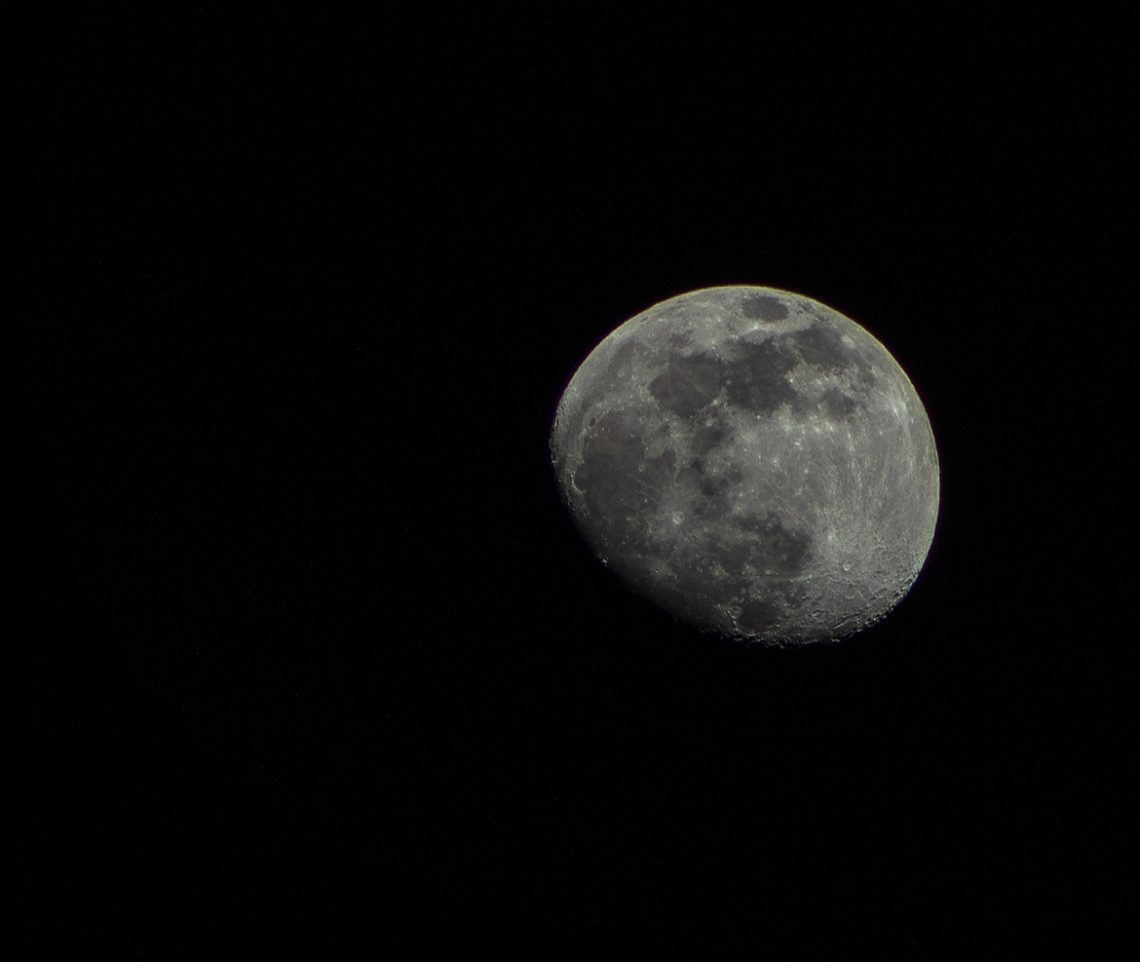
March 17, 2019.
After watching a YouTube video on astrophotography taken with an Apertura 8-inch Dobsonian Telescope, I longed to own one so I could better examine and photograph the moon. After scrimping and saving, I was finally able to order one. When it arrived, I could barely focus in class because I was so excited to try it out. The “light bucket,” as it’s called, is a 50-pound gateway into another world. Sir Isaac Newton invented the first one in 1668, and I bet he was in awe when he used it to see the Galilean moons of Jupiter for the first time. Three hundred and fifty one years later, I hauled the roughly same technology out of my dorm room, set it up between two trees in front of my residence hall, and pointed it at the moon. My jaw dropped as the 50-mile-wide craters and dark lava fields came into focus. Mounted on my DSLR, the telescope became the equivalent of a 1,300mm camera lens, and I could capture details with the large mirror that are impossible to see with the naked eye.
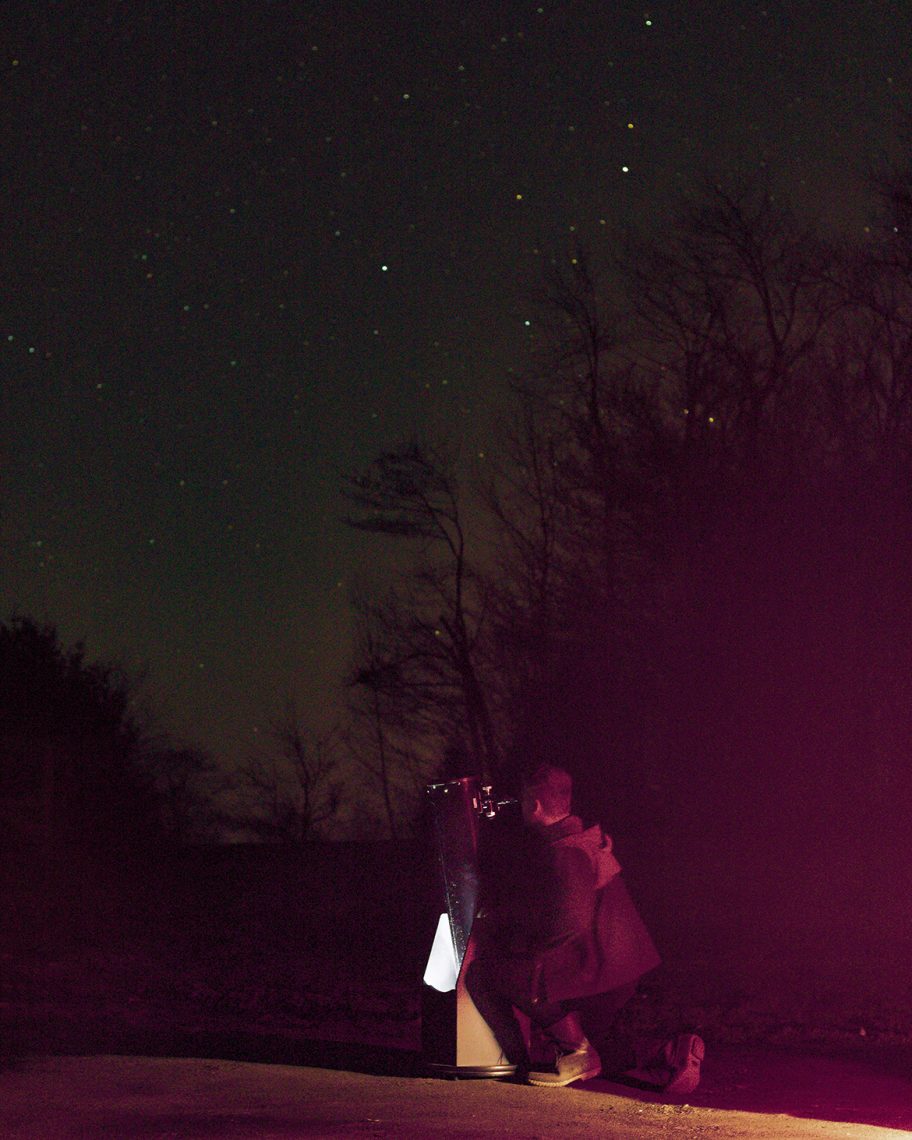
Since he purchased the 8-inch Dobsonian Telescope, Isaiah has passed on sleep to peer into the heavens. April 10, 2019.
My favorite time to see the moon is when it is around 30 percent illuminated. The Earthshine and sunshine together make the moon dramatic with high dynamic range. The lack of atmosphere on the moon causes temperature fluctuations that are very dramatic. In the shade of a crater, the surface can be around -175 degrees celsius (-280F) and not more than a foot away in the sunshine, temperatures can reach 130 degrees celsius (260F). It is tempting to try and search for evidence of the Apollo landings on the moon, but the scale involved makes it all but impossible. The moon is 238,000 miles from Earth, and the lunar landers are four meters across. That is roughly equivalent to trying to find a coin in New York City from 1,000 miles away in Florida. If you turned the Hubble Space Telescope toward the moon to try to spot the landers, it would be impossible because the finest pixel density that Hubble can produce is 43 meters across. The entire landing site would be 10 times smaller than a single dot from a Hubble image.
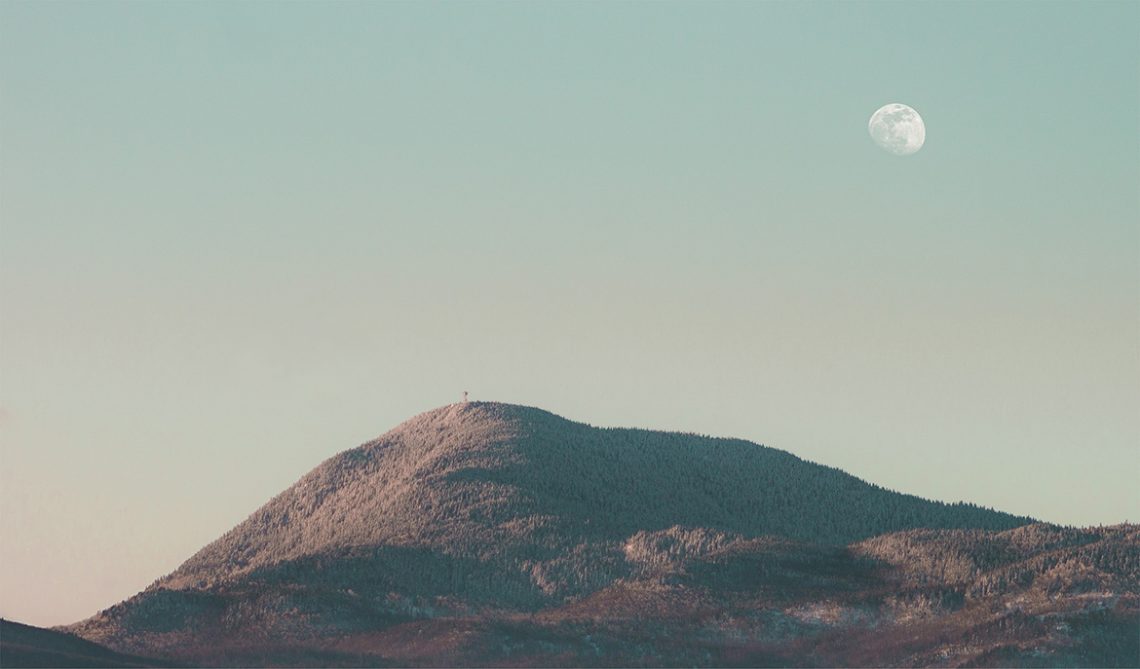
Sunset and moonrise over Mount Blue. March 22, 2019.
It was a remarkable feat of human ingenuity and achievement to have made it to the moon and explored its surface. It is still the farthest any human has ever traveled. When I hold my camera up to my telescope eyepiece to take a picture I can’t help but think about what it must be like to stand on ground that isn’t Earth — and just how far away it is. The farthest distance humanity has ever traveled away from Earth (238,000 miles) is covered by light photons in 1.3 seconds. The next time you are able to get away from city lights and look up, think about this: Most of the dots of light in the sky you can see are stars that are thousands of light-years away. The light just now reaching your eyes could have been emitted before humans crossed the land bridge into North America some 20,000 years ago.
The Black Hole image recently released is a mind-boggling example of scale. Just the small black circle in the center of the image is the size of our solar system from end to end. The Voyager spacecraft that has just recently escaped our solar system and has been traveling through interstellar space at almost 39,000 miles an hour would be slightly out of the center of the black hole in the picture. I hope you get the chance to see the night sky through a telescope like I have. It might change your perspective on life completely.
